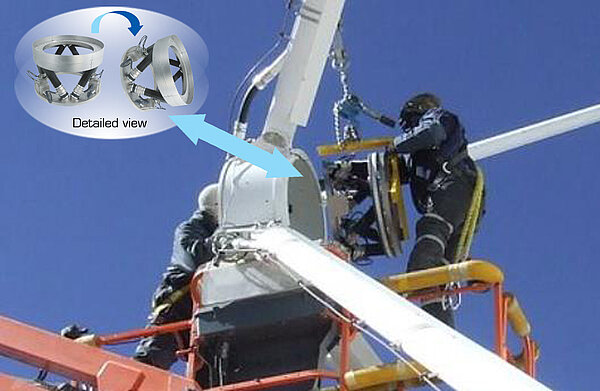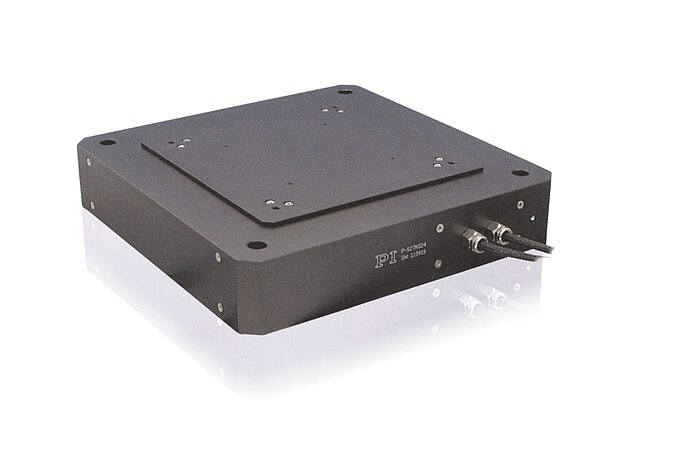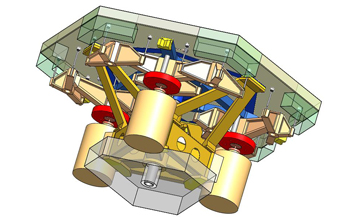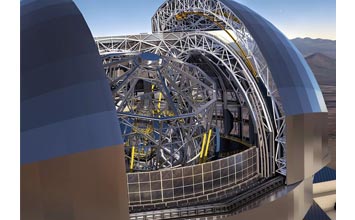Black Holes and Hexapods
How 6-DOF Alignment Systems Contribute to the Success of the Event Horizon Telescope
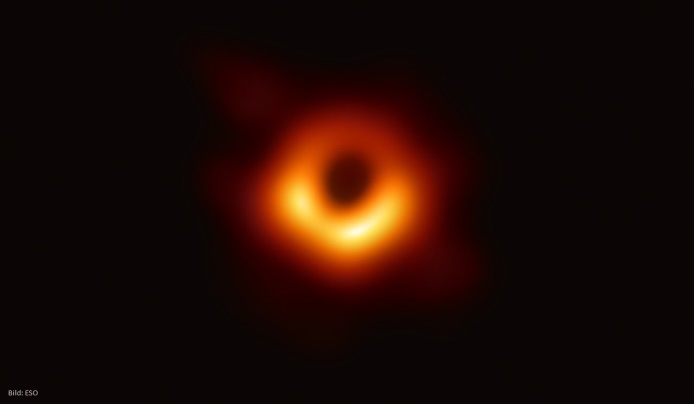
Black Holes - From Theory to Imaging
A black hole is a concentration of mass so strong that nothing can escape its gravitational field. According to Wikipedia, objects with these massive gravitational fields were first considered in the 18th century by John Michell and Pierre-Simon Laplace. Fast forward to 2019 - the first ever direct image of a black hole in the universe was made possible by extensive research and work of a group of astronomers of the Event Horizon Telescope (EHT). The EHT is a network of powerful, ground-based radio telescopes distributed around the world. PI’s 6-DOF alignment technology, integrated in many telescopes, is part of this success story. PI precision motion components (piezo mechanisms) were also involved, when the first merger of black holes was detected by the LIGO collaboration in February 2016, proving the existence of gravitational waves.
A total of eight observatories in Hawaii, Arizona, Mexico, Chile, Antarctica, and in the Spanish Sierra Nevada provided the raw data that was later processed into one single image. The principle behind combining feeds from multiple distant observatories is called Very Long Baseline Interferometry (VLBI) and basically interconnects the individual systems into one giant virtual telescope.

A large contribution to the data was delivered by ALMA (Atacama Large Millimeter/Submillimeter Array) which totals 66 radio telescopes, located in the Chilean Atacama desert. The ALMA sub-reflectors are equipped with custom hexapod 6-DOF alignment systems designed by PI. Another telescope equipped with a PI alignment system is the Atacama Pathfinder Experiment (APEX).
The challenges of the extreme weather conditions in this area (temperature differential of up to 50 °C, dust, rain, snow, strong winds, and low air pressure due to the altitude of over 5,000 m) were met by PI with custom designs for the mechanic and electronic components of the hexapod systems. These hexapods enable exact alignment of the sub-reflectors to the large main reflectors by software and help improve the sensitivity and performance of the radio telescopes.
According to Xavier Barcons, the ESO Director General, ALMA is EHT's most sensitive system and its 66 high-precision antennas were crucial to EHT's success. PI was able to demonstrate the performance and reliability of its motion systems in design, manufacturing and commissioning for this prestigious project.
PI will also play a decisive role in future astronomy projects such as the ESO’s European Extremely Large Telescope (ELT), scheduled to go into operation in 2024. The main mirror of the ELT will consist of 798 individual mirror segments, each 1.40 meters in diameter. PI designed a new class of ultra-precise, high load hybrid actuatorsto align the mirror segments. Three PACT (position actuator) drives will be installed on each segment to compensate for deviations in the nanometer range improving the optical performance of the complete system.
Blog Categories
- Aero-Space
- Air Bearing Stages, Components, Systems
- Astronomy
- Automation, Nano-Automation
- Beamline Instrumentation
- Bio-Medical
- Hexapods
- Imaging & Microscopy
- Laser Machining, Processing
- Linear Actuators
- Linear Motor, Positioning System
- Metrology
- Microscopy
- Motorized Precision Positioners
- Multi-Axis Motion
- Nanopositioning
- Photonics
- Piezo Actuators, Motors
- Piezo Mechanics
- Piezo Transducers / Sensors
- Precision Machining
- Semicon
- Software Tools
- UHV Positioning Stage
- Voice Coil Linear Actuator
- X-Ray Spectroscopy
